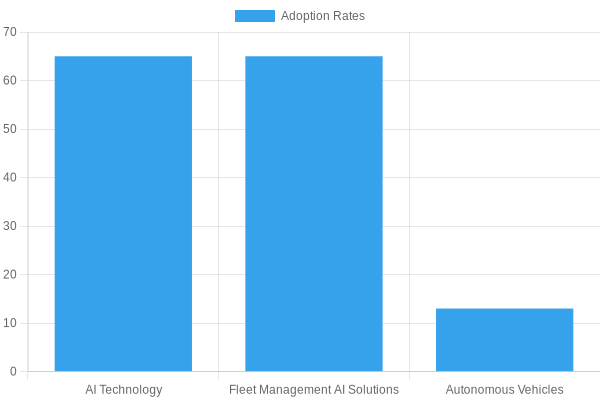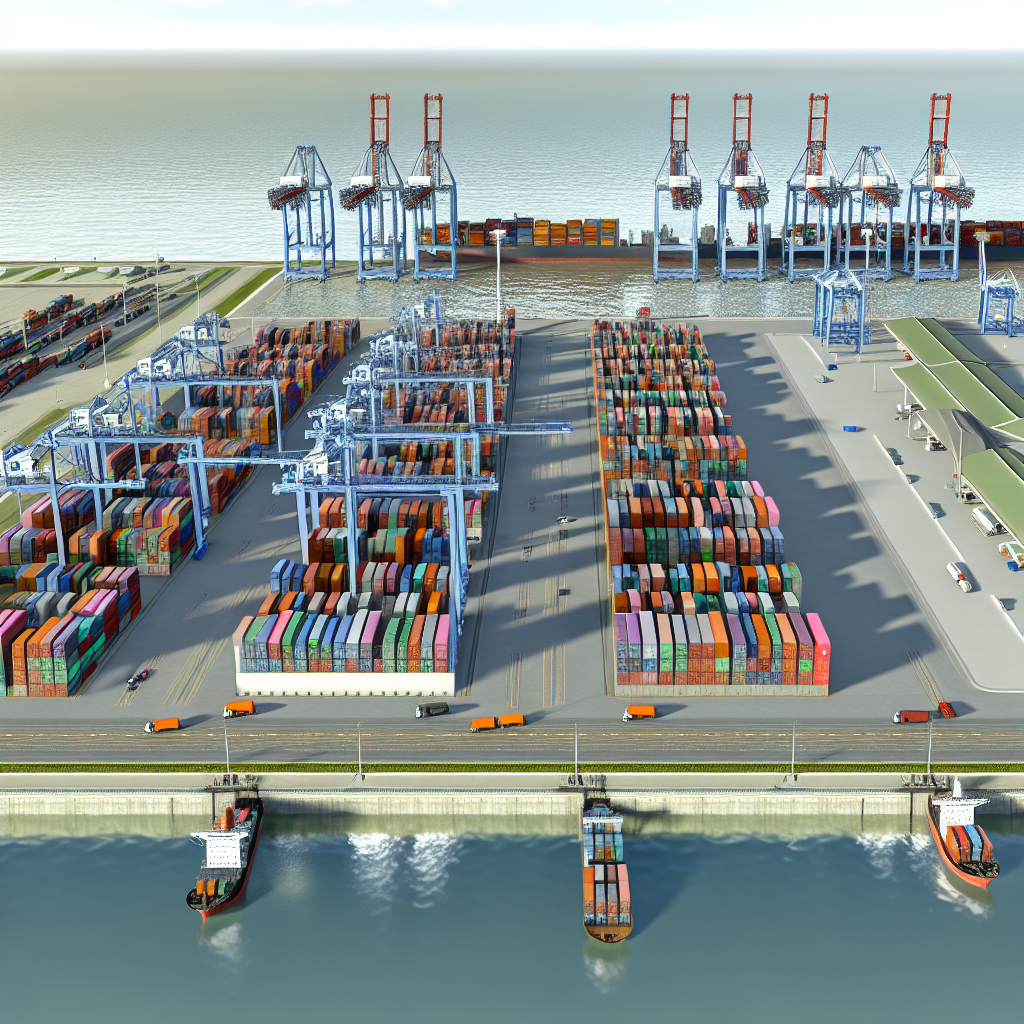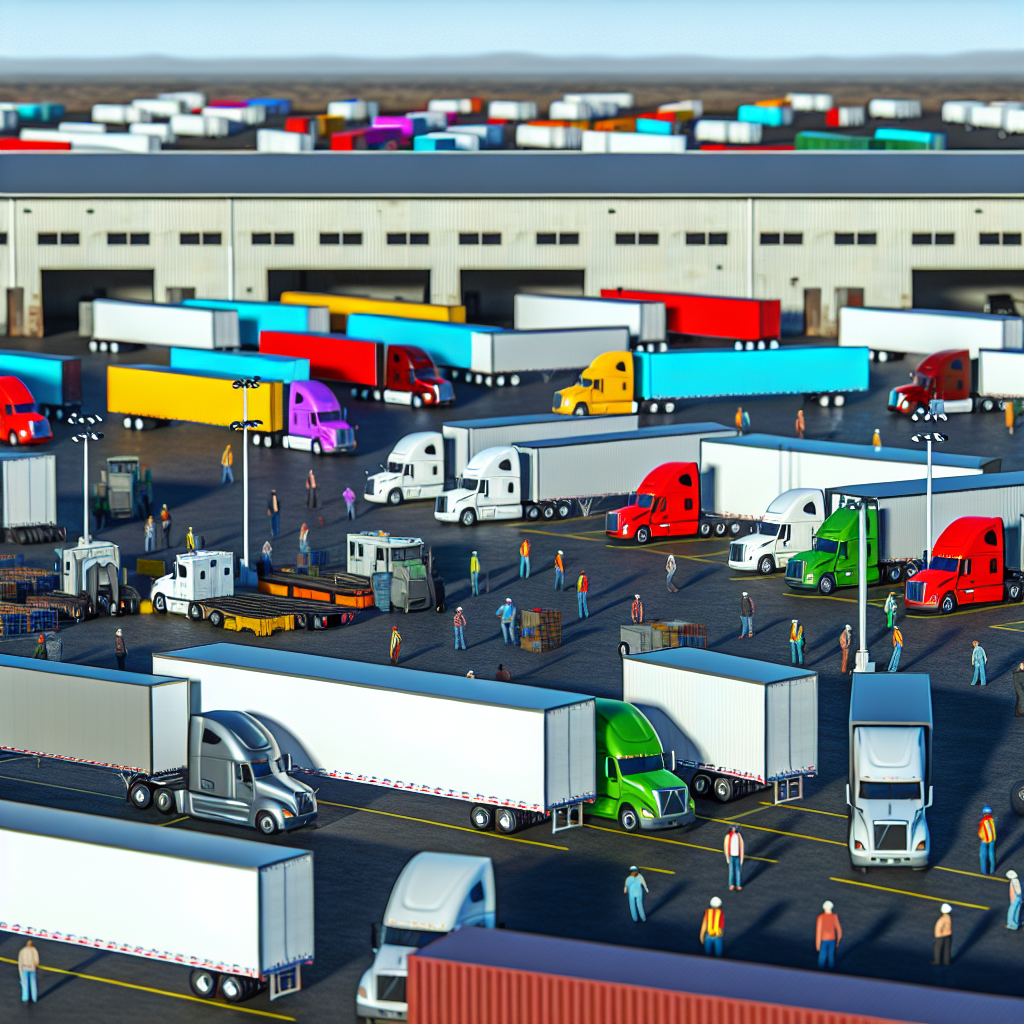Recent Leadership Changes in the Trucking Industry
In the past year, the trucking industry has witnessed significant leadership changes among key players such as Great Dane, TEN Canada, and Trade Tech. These changes reflect evolving strategies and a focus on strengthening operational foundations amidst a competitive landscape.
Great Dane
One of the most notable announcements comes from Great Dane. Rick Mullininx, the company’s long-serving President and Chief Operating Officer, has plans to retire on December 31, 2026. Mullininx has dedicated 45 years to Great Dane, during which he significantly shaped the company’s trajectory. Post-retirement, he will continue to provide insights as a member of Great Dane’s board of advisors.
In addition to Mullininx’s retirement, Great Dane has made strategic executive appointments:
- In January 2025, Robert France was appointed as Executive Vice President and Chief Human Resources Officer. With over three decades of experience, including time at Corning, France is expected to enhance Great Dane’s HR leadership.
- December 2023 welcomed Greg Dickman as the Executive Vice President of Strategy. Charged with formulating the strategic direction across sales, service, and operations, Dickman’s experience will be crucial in navigating future challenges.
TEN Canada
In the realm of new hires, TEN Canada introduced Malia Johnstone as the National Account Director in September 2025. Based out of Montreal, Johnstone transitions from her prior roles in fuel distribution and transportation rental with firms like 4Refuel, Hertz, and Ryder System. Her extensive background is anticipated to drive growth and strengthen customer relationships within the national account sector.
Trade Tech
Trade Tech also marked its expansion into Canada, with Adarsh Vasudev moving from the company’s operations in India to spearhead the new Canadian division. In this key role, Vasudev will focus on delivering Trade Tech’s logistics platform to Canadian clients, further expanding the company’s footprint alongside its established operations in the U.S. and Mexico.
These recent leadership transitions illustrate the dynamic nature of the trucking industry, showcasing how companies are positioning themselves for growth and adaptation in an ever-changing market. The strategic hires and planned retirements signal a commitment to enhancing operational efficacy and exploring new opportunities in North America.
Introduction
In trucking, leadership changes can shape a company’s future. They affect everything from operational strategy to company culture. Recently, Rick Mullininx announced his retirement from Great Dane after 45 years. This marks a significant change for both the company and the industry.
As experienced leaders like Mullininx retire, new faces bring fresh ideas. This creates opportunities and challenges for organizations in a changing environment. The shift in leadership is likely to reshape the trucking industry, showing the importance of adaptability, strategic foresight, and innovation. The following sections will explore notable hires and retirements, illustrating how these changes affect the industry and what they mean for the future.
Insights into Leadership Changes in the Trucking Industry
Leadership transitions within trucking companies significantly influence company culture, operational efficiency, and strategic direction. As seasoned leaders retire, new executives bring fresh perspectives and operational strategies that can greatly impact organizational dynamics.
The Dynamics of Leadership Changes
An aging workforce is reshaping leadership in the trucking industry, with many experienced drivers and executives nearing retirement. According to the American Transportation Research Institute, the average age of U.S. truck drivers is now 47 with large cohorts nearing retirement, creating a gap in experienced leadership. In response to this demographic shift, companies are compelled to attract and develop new talent, prompting strategic changes in hiring and training practices. For instance, innovative recruitment models such as partnerships with trade schools and apprenticeships have emerged to smooth the onboarding of new drivers, highlighting the importance of workforce dynamics and leadership transitions in logistics.
Culture and Operational Efficiency
When leadership changes occur, the influence on company culture can be profound. For example, Stokes Trucking restructured its management to focus holistically on driver engagement after grappling with high turnover rates, resulting in enhanced company morale and reduced recruitment costs. Meanwhile, Peterbilt adopted the GROW Coaching Model through InsideOut Development to boost internal communications and foster a culture of continuous improvement, illustrating how new leadership can invigorate organizational processes.
Old Dominion Freight Line implemented a redesign of its service centers to improve operational efficiency, leading to enhanced performance metrics such as reduced truck turnaround times and increased package handling rates. Schneider National’s strategic focus on driver retention through personalized career development and enhanced work-life balance initiatives exemplifies how leadership changes can directly cultivate a more committed and productive workforce.
Strategic Direction and Renewed Focus
The strategic direction also shifts significantly during leadership transitions. As trucking companies face challenges such as labor shortages and increasing competition, new leaders often instill a renewed focus on innovation and operational enhancements. Understanding the importance of technology and the adoption of trucking technology, the industry is increasingly embracing advanced logistics management systems and autonomous solutions to streamline operations and reduce dependency on human labor.
Moreover, the industry is becoming more diversified in terms of workforce engagement strategies, with efforts to attract women, military veterans, and younger demographics, countering the trend of declining numbers in traditional driver roles. This diversification is crucial for maintaining a robust and resilient workforce.
Conclusion
In conclusion, effective leadership transitions in the trucking industry play a pivotal role in fostering innovation, enhancing operational efficiency, and strengthening company culture. As truck companies navigate retirements and the addition of new hires, adapting to these changes strategically and embracing trucking technology adoption is vital for long-term sustainability and growth in an increasingly competitive environment. Companies that recognize the importance of leadership in shaping their culture and strategic direction will benefit not only their bottom line but also create a more engaged and motivated workforce.
Recent Leadership Changes in Trucking Companies
-
Rick Mullininx
- Company: Great Dane
- Position: President and Chief Operating Officer
- Announcement: Retiring on December 31, 2026, after 45 years in the role.
-
Malia Johnstone
- Company: TEN Canada
- Position: National Account Director
- Announcement: New hire as of September 2025, having transitioned from roles in fuel distribution with 4Refuel, Hertz, and Ryder System.
-
Adarsh Vasudev
- Company: Trade Tech
- Position: Executive in charge of Canadian operations
- Announcement: Moving from Trade Tech India to lead the Canadian division for Trade Tech.
-
Dave Bergeron
- Company: FreightPath
- Position: Chief Executive Officer
- Announcement: Appointed on October 27, 2025.
-
John Smith
- Company: FedEx Freight
- Position: Chief Executive Officer
- Announcement: Finalized leadership team for the freight division on October 6, 2025, as part of an upcoming spin-off.
-
Brad Martin
- Company: FedEx Freight
- Position: Chairman
- Announcement: Newly appointed as part of the spin-off leadership team.
-
Steve Kenner
- Company: Torc Robotics
- Position: Chief Safety Officer
- Announcement: Appointed on April 25, 2025, to lead global safety initiatives.
-
Joe Beacom
- Company: Landstar System
- Position: President of Landstar System Holdings
- Announcement: Transitioning to Special Advisor to the CEO before retiring in Q1 2026.
-
Jacob Nichols
- Company: Palmer Trucks
- Position: Co-President and Chief Human Resources Officer
- Announcement: New leadership role as part of a succession plan.
-
Matthew Blackman
- Company: Volvo Trucks North America
- Position: Regional Vice President for Canada
- Announcement: Succeeding Paul Kudla, who is retiring at the end of December 2023.
These announcements reflect the significant turnover and evolving leadership within the trucking industry, showcasing key individuals stepping into roles that will shape the future of their companies.
“It has been the honor of my life to grow up at Great Dane. From my earliest days on the shop floor to serving as President, I have had the privilege of working with incredible people who care deeply about this company. I am proud of what we have accomplished together and remain committed to ensuring a smooth transition that positions Great Dane for continued success.”
Malia Johnstone: Profile Overview
Background and Experience
Malia Johnstone has recently stepped into the role of National Account Director at TEN Canada, marking a significant milestone in her career within the trucking and logistics sector. Based out of Montreal, her previous experience includes substantial roles in fuel distribution and transportation rental with leading companies such as 4Refuel, Hertz, and Ryder System. Malia has demonstrated exceptional prowess in managing major accounts and driving strategic initiatives that enhance operational efficiencies.
Her career trajectory showcases a strong foundation in customer relationship management and extensive knowledge of logistical operations. Malia’s hands-on approach and strategic vision have enabled her to effectively lead diverse teams, drive business growth, and improve client satisfaction rates in highly competitive marketplaces.
Contributions to TEN Canada
At TEN Canada, Malia is expected to leverage her extensive experience to strengthen customer relationships and foster growth within the national account sector. Her insight into fuel distribution will be particularly valuable as TEN continues to expand its footprint across Canada. With the company’s recent acquisition of TIP Canada, which has transformed it into the second-largest trailer leasing enterprise in North America, Malia’s leadership is anticipated to be instrumental in navigating the complexities associated with this expansion.
Malia’s focus on enhancing service delivery and optimizing operational processes aligns perfectly with TEN Canada’s mission to offer innovative transportation solutions. Her ability to identify market trends and adapt strategies accordingly will likely facilitate the development of customized solutions that meet the varying demands of clients, positioning TEN Canada as a preferred partner in the industry.
Expected Impact and Future Initiatives
As the trucking industry undergoes significant transformations, Malia’s strategic mindset and strong leadership skills will contribute to navigating these changes effectively. Her experience with technology adoption in logistics will allow TEN Canada to embrace digital transformation, improving operational efficiency and elevating customer experiences through advanced technological solutions.
Malia Johnstone’s appointment reflects TEN Canada’s commitment to cultivating leadership talent that drives innovation and sustainable growth in the transportation sector. With her onboard, stakeholders are optimistic about the company’s ability to enhance service offerings and solidify its position as a market leader across North America.
Conclusion
In summary, Malia Johnstone’s integration into TEN Canada as the National Account Director heralds a promising future for the organization. With her robust background and experience, she is poised to make significant contributions that will shape the strategic direction of TEN Canada and foster a more resilient and responsive operational framework.
User Adoption Rates of New Technologies in the Trucking Industry
The trucking industry is experiencing unprecedented changes as new technologies emerge, promising enhanced operational efficiency and safety. Embracing these innovations is critical for companies striving to remain competitive in a rapidly evolving market. Recent statistics highlight the user adoption rates of new technologies in trucking, showcasing a trend towards digital transformation.
Approximately 65% of U.S. trucking companies have integrated artificial intelligence (AI) into their operations, resulting in an average of 15% reduction in delivery times. Moreover, the autonomous truck market is set to grow at an impressive 13.4% annually between 2025 and 2032, driven by technological advancements and the urgent need to address driver shortages. Furthermore, around 73% of trucking firms have adopted digital tools for fleet management, with 80% identifying data analytics as essential for improving operational efficiency.
While these adoption rates are promising, the role of effective leadership cannot be overstated. Leaders must prioritize workforce upskilling, particularly since about 45% of trucking workers lack adequate digital skills. Comprehensive training programs can bridge this gap and reduce turnover by approximately 20%. Additionally, leaders must focus on change management to facilitate cultural shifts and ensure smooth transitions during these technological adoptions.
In conclusion, as the trucking industry embraces technology, effective leadership is paramount in guiding these changes. By fostering a culture of continuous learning and strategic investment, leaders can navigate the complexities of technology transitions, ultimately achieving sustained operational improvements.

| Name | Company | Position | Date of Change |
|---|---|---|---|
| Rick Mullininx | Great Dane | President and Chief Operating Officer | December 31, 2026 |
| Malia Johnstone | TEN Canada | National Account Director | September 2025 |
| Adarsh Vasudev | Trade Tech | Executive in charge of Canadian operations | Appointment date not specified |
| Dave Bergeron | FreightPath | Chief Executive Officer | October 27, 2025 |
| John Smith | FedEx Freight | Chief Executive Officer | October 6, 2025 |
| Brad Martin | FedEx Freight | Chairman | Appointment date not specified |
| Steve Kenner | Torc Robotics | Chief Safety Officer | April 25, 2025 |
| Joe Beacom | Landstar System | President of Landstar System Holdings | Transitioning in Q1 2026 |
| Jacob Nichols | Palmer Trucks | Co-President and Chief Human Resources Officer | Appointment date not specified |
| Matthew Blackman | Volvo Trucks North America | Regional Vice President for Canada | December 2023 (post-appointment) |

Conclusion
In the ever-evolving landscape of the trucking industry, the significance of leadership transitions cannot be overstated. As experienced leaders retire, such as Rick Mullininx from Great Dane, they leave behind profound legacies and open doors for new leadership to emerge. These transitions are pivotal, as they influence organizational structures, company culture, and operational efficiencies.
The introduction of new executives brings fresh perspectives and approaches, fostering innovation and strategic thinking necessary to navigate the complexities of modern logistics. With a majority of truck drivers nearing retirement age, the industry faces a pressing need to attract and develop new talent. This shift not only addresses the skills gap but also promises a revitalization of ideas and methodologies within companies.
Moreover, as the industry continues to embrace technological advancements, effective leadership will play a critical role in guiding organizations through these changes. The integration of AI, autonomous vehicles, and digital tools requires leaders to foster a culture of continuous learning and adaptability among their teams. By prioritizing workforce upskilling, trucking companies can reduce turnover and ensure a smooth transition into a more technologically integrated future.
In conclusion, the future outlook for the trucking industry is promising as it stands on the brink of transformation driven by leadership changes. Companies that recognize the importance of these transitions will not only flourish but will also pave the way for a more engaged, motivated, and innovative workforce, capable of meeting the demands of an increasingly competitive environment. With the right focus on leadership and talent development, the trucking industry can anticipate not just survival but substantial growth in the years to come.
Key Leadership Changes and Their Impacts
-
Rick Mullininx from Great Dane
- Retiring on December 31, 2026, after 45 years
- His exit creates a significant leadership gap and an opportunity for new executive strategies.
-
Malia Johnstone at TEN Canada
- Joined as National Account Director in September 2025
- Expected to enhance customer relations and drive growth in national accounts due to her robust experience.
-
Adarsh Vasudev at Trade Tech
- Leading the new Canadian division, previously in operations in India
- Focusing on expanding Trade Tech’s logistics solutions within Canada, vital for growth in the region.
- Robert France has become Executive Vice President and Chief HR Officer at Great Dane, positioning the company for future staffing success.
- Greg Dickman is now Executive Vice President of Strategy at Great Dane, critical for navigating company challenges post-Mullininx’s retirement.
These changes highlight the evolving nature of leadership within the trucking industry, emphasizing the importance of strategic foresight and adaptability as companies transition between veteran leaders and new hires.
As the trucking industry continues to evolve, the interplay between leadership changes and technology adoption becomes increasingly evident. New leaders must not only guide their organizations through the transitions caused by retirements but also embrace the technological advancements that are reshaping the sector. This correlation underscores the necessity for a forward-thinking approach, as the fresh perspectives brought by new executives can drive innovation and facilitate the integration of cutting-edge technologies.
By aligning leadership dynamics with the industry’s swift technological transformations, companies can better position themselves to tackle emerging challenges, enhance operational efficiency, and remain competitive in a rapidly changing market. Ultimately, these leadership transitions represent a pivotal moment for the trucking industry, one that is ripe with potential for growth and improvement as organizations adapt to a new era of technology-driven logistics.


